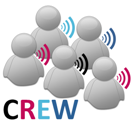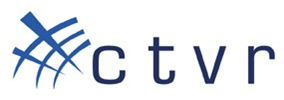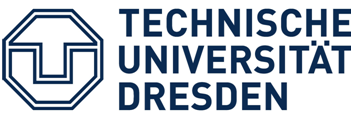TV bands
LOG-a-TEC
Short testbed description
LOG-a-TEC is an outdoor experimental facility supporting cognitive radio networking experimentation in ISM and TV bands. The testbed consists of several clusters of wireless sensor nodes located in the municipality of Logatec, Slovenia and at the Jožef Stefan Institute campus. Clusters in the Logatec municipality cover approximately 350.000 m2 of public space that includes the city center and an industrial zone.
Example experiments
Various experiments can be performed using the LOG-a-TEC infrastructure, for example:
- Investigating different RF interference detection techniques, e.g. distributed vs. centralized detection.
- Exploring different interference mitigation techniques, such as adaptive power control.
Access information
LOG-a-TEC is accessible via a web-interface. Experimenters can install pre-defined firmware on one or more sensor nodes, receive status information, download experiment traces, and interact with individual nodes during an experiment. Also custom firmware can be installed but needs to first be approved. Before running an experiment, the GRASS-RaPlaT tool can be used for simulation. The same tool can be used later to visualize the results of an experiment.
Demonstration
- Tutorial about the LOG-a-TEC portal
- Description of the GRASS RaPlaT simulation and visualization functionality
- Description of a ISM 2.4 GHz spectrum sensing experiment
Getting started and user documentation
Access the complete documentationSensing Engine
Short testbed description
The imec sensing enigne is a prototype implementation of a sensing engine for mobile communication devices. The prototype consists of two main blocks: an analog RF front-end including analog to digital conversion and a DIgital Front-end For Sensing (DIFFS). For permanent deployment in the w-iLab.t testbed a WARP board is selected as analog RF front-end, covering the 2.4 and 5 GHz ISM bands. An in house developed flexibele SCAlable raDIO (SCALDIO) is also tested in a lab environment, covering an RF input range from 0.1 up to 6 GHz and a channel bandwidth up to 40 MHz.
Access information
The imec sensing engine is available in the Ghent island CREW (w-iLab.t testbed).
Getting started and user documentation
Advanced informationIRIS
Short testbed description
Iris is a software radio architecture that has been developed by the CTVR , built in C++, it is used for constructing complex radio structures and highly reconfigurable radio networks. Its primary research application is to conduct a wide range of dynamic spectrum access and cognitive radio experiments. It is a GPP-based radio architecture and uses XML documents to describe the radio structure.
Example experiments
In this sample experiment we will run a simple radio and then adapt a component and add a controller, with a view to exploring the basic functionality of both. The steps a researcher should follow to complete the experiment are outlined below.
1. Follow the instructions outlined on the Iris wiki to run radio (https://ntrg020.cs.tcd.ie/irisv2/wiki/ExampleExperiments), OFDMFileReadWrite.XML.
2. If this radio is functioning correctly, “radio running” will appear on the command line.
3. To add a controller to the radio, we must first create an event in one of the components to which the controller can subscribe. To do this, open the shaped OFDM modulator and register an event in the constructor function.
4. Once the event is registered we must create a condition that must be satisfied for the event to be activated. To do this, open the “process” function (as this is where all the calculations are carried out) and specify a condition that activates the controller whenever, for example, 100 packets have passed through.
5. Once this has been done the controller can be made. Open the “example” controller; this gives us a template to work with.
6. Within the controller we must do two things, subscribe to the event that has been set up in the component and specify the parameter that we wish to change as well as the value we wish to change it to.
7. To change the parameter, we specify the name of the parameter as well as the component and engine that it is in. These are assigned in the “ProcessEvent” function.
8. The logic that dictates what the parameter is changed to also goes in this function.
9. Recompile all the relevant code, include the controller in the XML file and run the radio as before.
If the radio is running properly, you should see the event being triggered on the command line and the new value of the parameter in question.
Access information
Before gaining access to the Iris testbed it is essential to familiarise yourself with the Iris software. This is done through the Iris Wiki page. The Wiki gives you full instructions on how to download and install the Iris software onto your own computer as well as instructions on how to get started in using it. Use of the Wiki page requires a user account and password. These can be obtained through emailing either tallonj@tcd.ie or finnda@tcd.ie.
At this stage users will be able to performe experiments using Iris, independent of the Iris testbed, using either the simulated "channel component" or in conjunction with the USRP (1/2/N210 etc.).
Access to the Iris testbed is given out separately from access to the Wiki. This is because access to the Iris testbed is often not necessary if users have USRP hardware of their own available.
However, if remote access to the Iris testbed (after installing and trying out the Iris software) is required, details of how to obtain access to the testbed can be found here.
Demonstration
Demonstration of a dynamic spectrum access wireless backhaul system in the UHF band












